
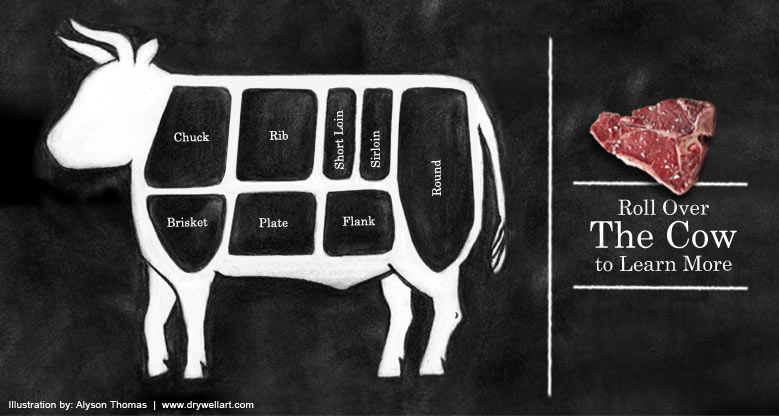
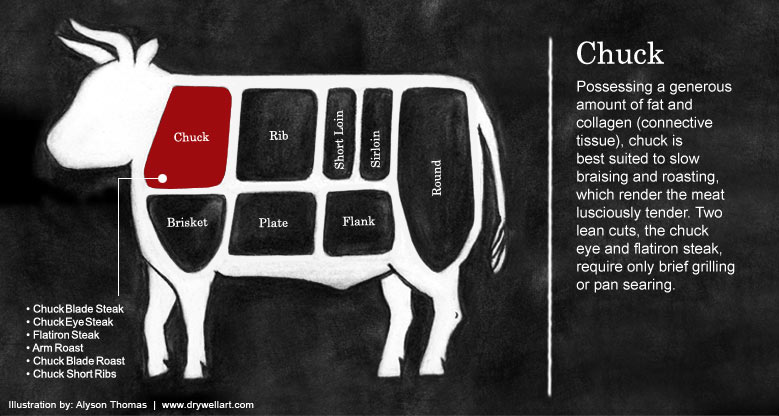
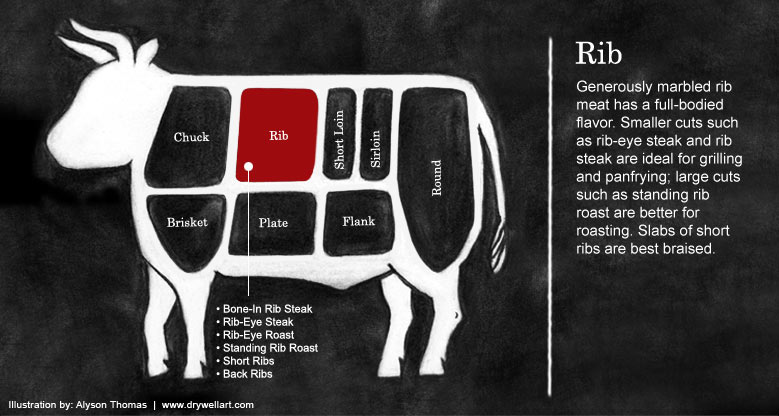
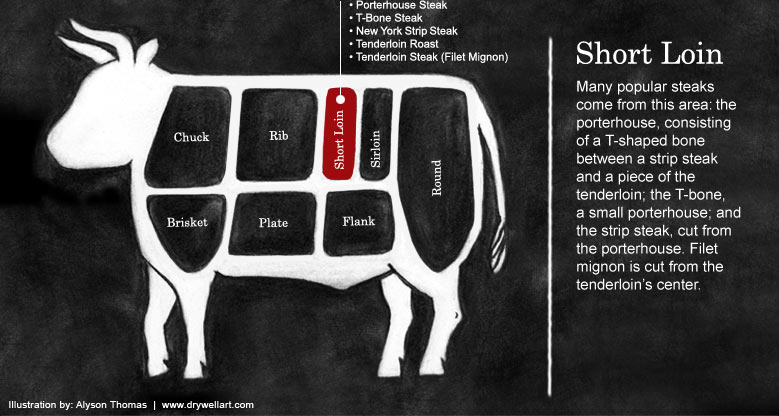
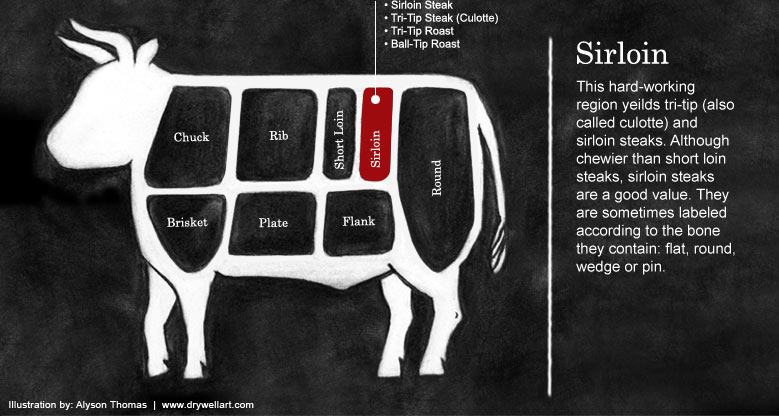

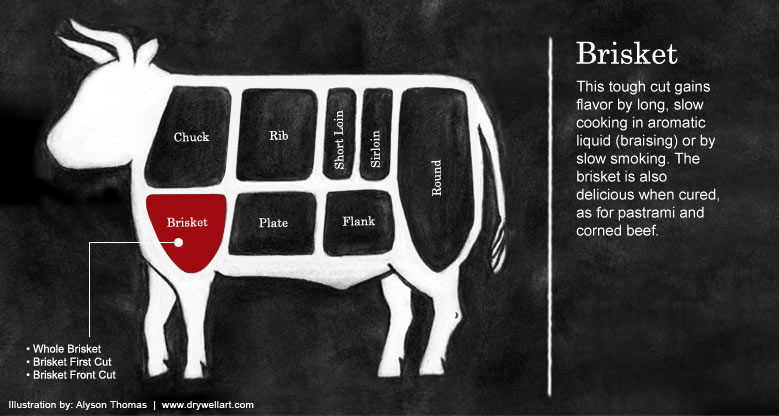


The top three USDA grades you are likely to see in stores are prime, choice and select. The labels reflect the degree of marbling (the ratio of fat to lean meat), color and maturity.
- Prime beef, the highest grade, is from young cattle and contains the most marbling.
- Choice beef lacks the degree of marbling found in prime but still produces a number of tender and juicy cuts.
- Select is a label applied to meat that is particularly lean.
Aging greatly improves the texture and flavor of beef, yielding a buttery character and intense taste. Most steaks are wet aged, which involves vacuum-sealing the meat and refrigerating it for 1 to 4 weeks.
Dry-aged beef, which is stored unwrapped at precise temperatures and humidity levels for several weeks, loses a large amount of moisture, which concentrates the flavor. Some cooks prefer dry-aged beef for simple preparations where the flavor of the beef shines through.
Grain-fed beef produces richly flavored meat with abundant marbling, but the animals often live in close quarters in feedlots and require antibiotics to remain healthy. Consumers and chefs have rediscovered the taste and benefits of beef from cattle raised on grass. Some ranchers follow a hybrid process: the cattle feed on grass, which is healthier for them and better for the environment, and then, just before going to market, the cattle are "finished" on grain to add the rich marbling of grain-fed beef. Be sure to ask your butcher whether the beef offered is grain fed or grass fed.








